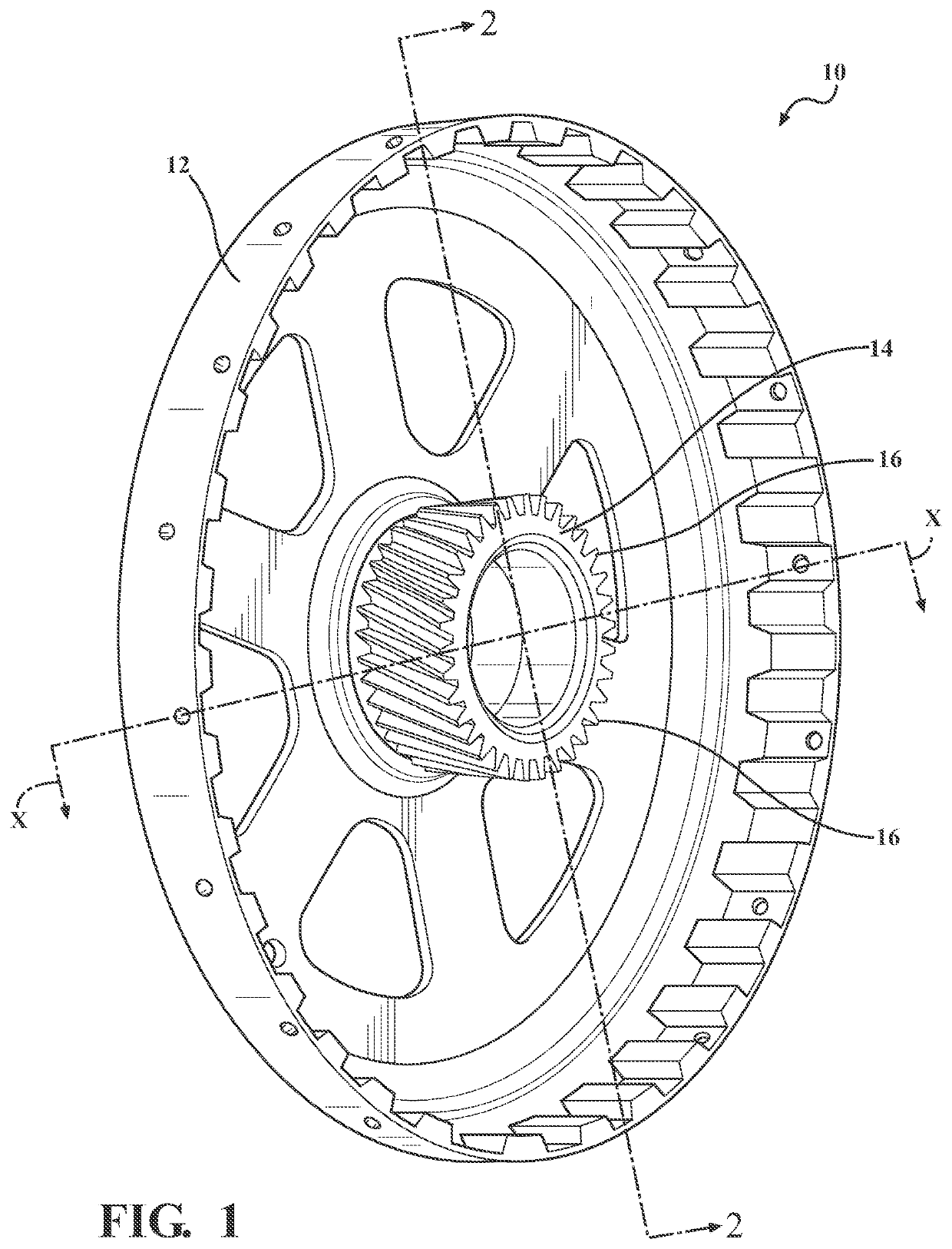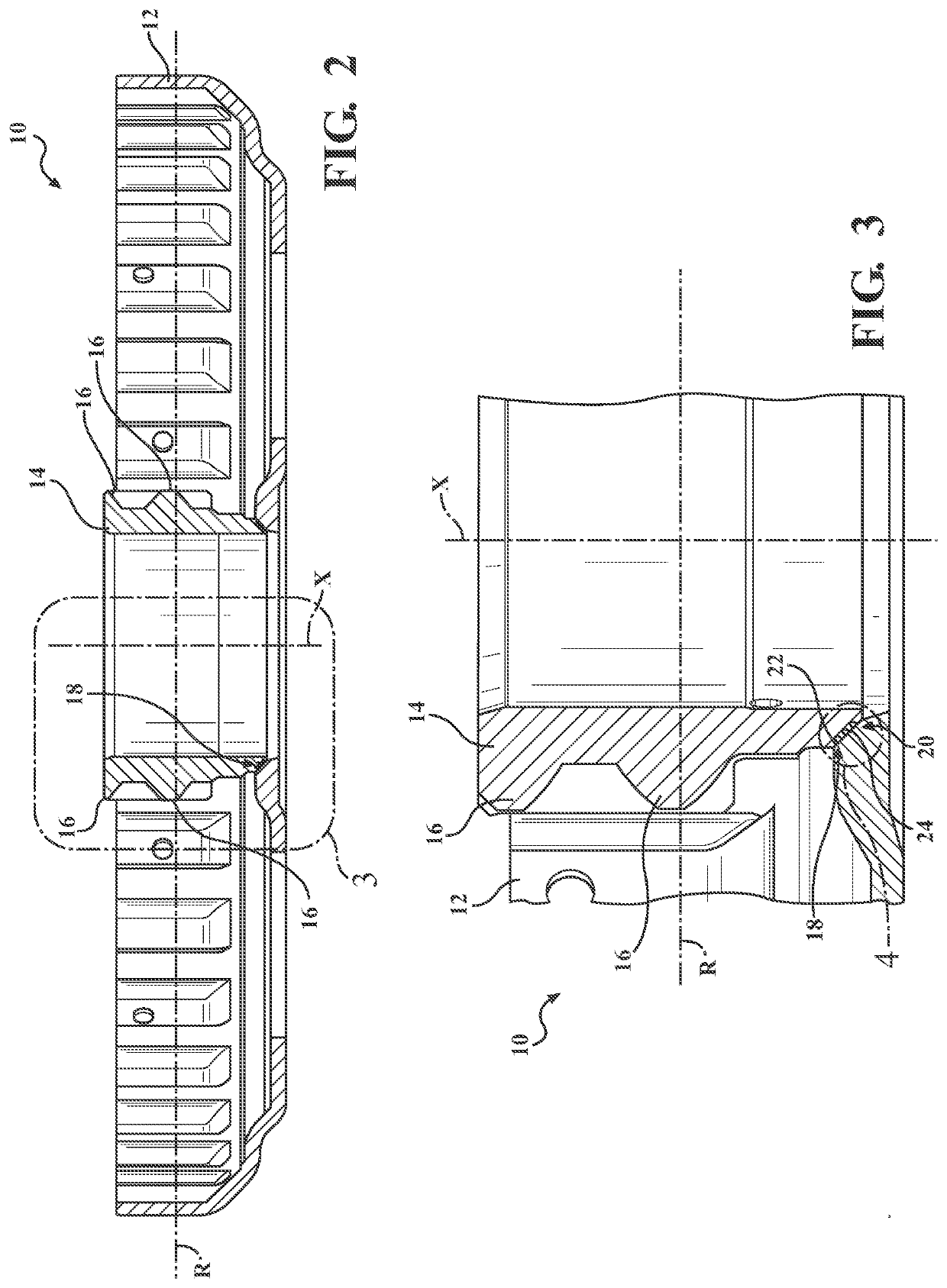Welding of dissimilar materials with features in faying surface
a technology of dissimilar materials and features, applied in welding/soldering/cutting articles, manufacturing tools, mechanical equipment, etc., can solve the problems of high cost of decarburizing, difficult to produce strong joints, and inability to resist welding, and achieve the effect of increasing current density
- Summary
- Abstract
- Description
- Claims
- Application Information
AI Technical Summary
Benefits of technology
Problems solved by technology
Method used
Image
Examples
Embodiment Construction
[0028]A method of resistance welding is disclosed that includes forming a number of weld joints between dissimilar materials. A resulting workpiece assembly is also disclosed. The dissimilar materials may include steel and aluminum or an aluminum alloy. In some cases, the steel may be carburized to provide good wear resistance. By providing a plurality of grooves separated by raised portions in the steel, the current density is concentrated in the steel, making it possible to adequately form the weld joints without decarburizing the steel. The weld joint may also or alternatively be facilitated by providing the faying surfaces at angles with respect to the axis through which pressure is applied by the welding electrodes, or at angles with respect to axes of the two parts being welded together, to reduce intermetallics at the faying interface.
[0029]Referring now to FIGS. 1-4, a welded assembly is provided and generally designated at 10. The welded assembly 10 includes an aluminum (or...
PUM
| Property | Measurement | Unit |
|---|---|---|
| angle | aaaaa | aaaaa |
| angle | aaaaa | aaaaa |
| angle | aaaaa | aaaaa |
Abstract
Description
Claims
Application Information
 Login to View More
Login to View More - R&D
- Intellectual Property
- Life Sciences
- Materials
- Tech Scout
- Unparalleled Data Quality
- Higher Quality Content
- 60% Fewer Hallucinations
Browse by: Latest US Patents, China's latest patents, Technical Efficacy Thesaurus, Application Domain, Technology Topic, Popular Technical Reports.
© 2025 PatSnap. All rights reserved.Legal|Privacy policy|Modern Slavery Act Transparency Statement|Sitemap|About US| Contact US: help@patsnap.com



